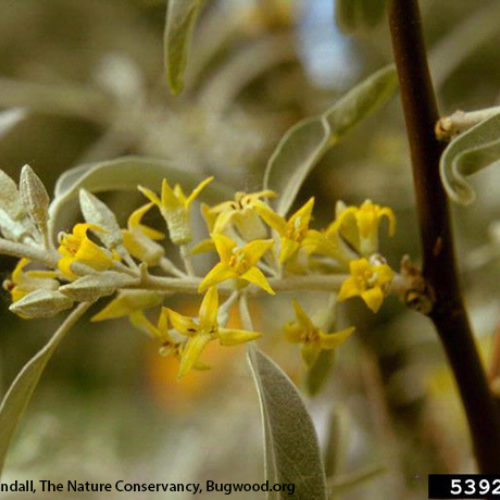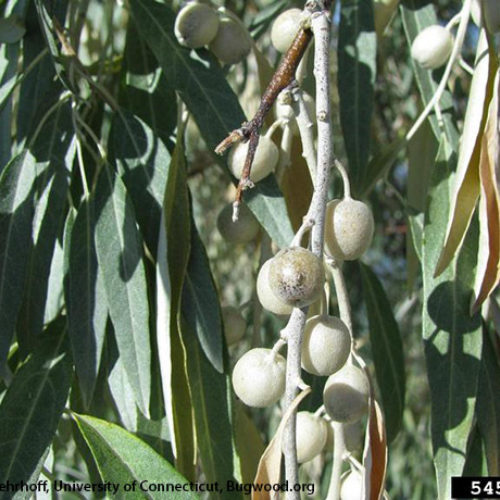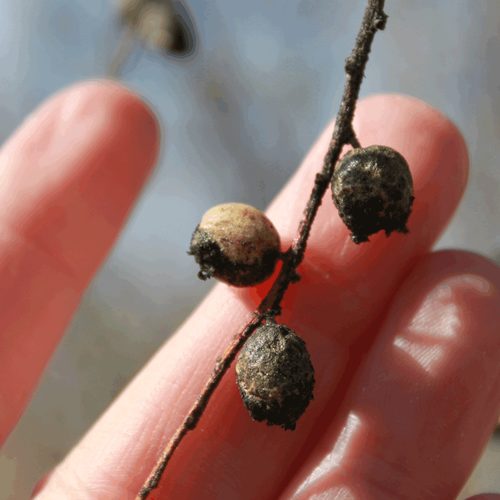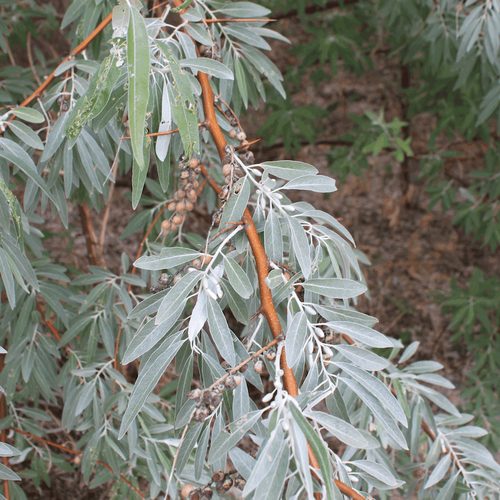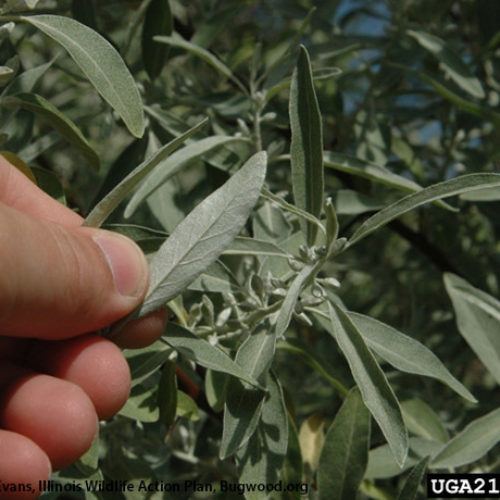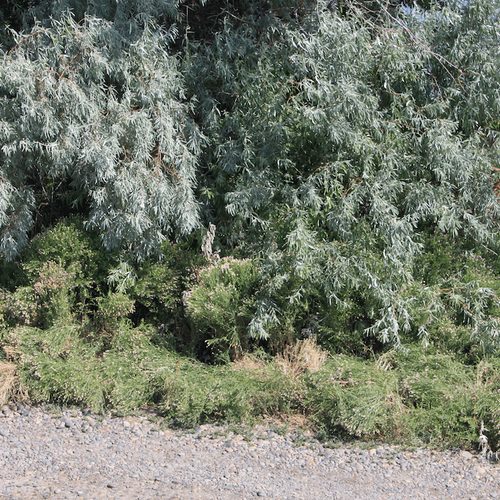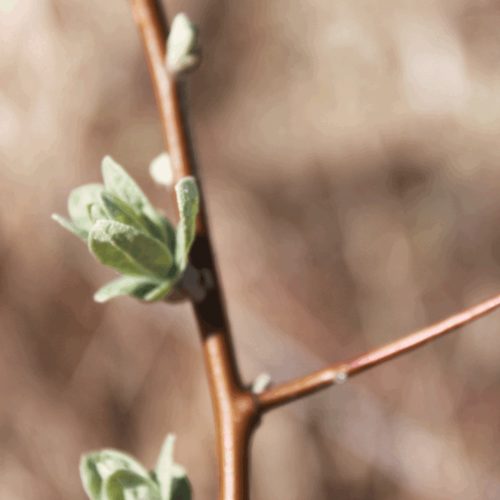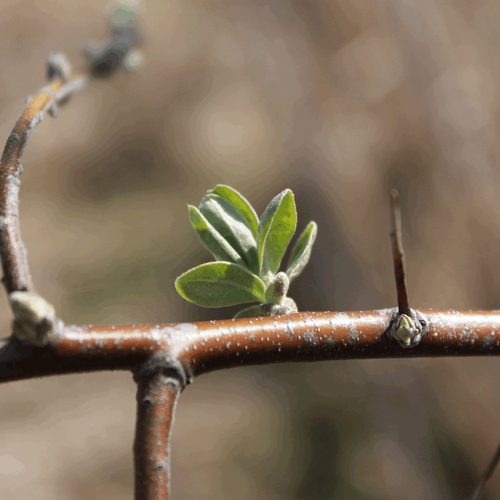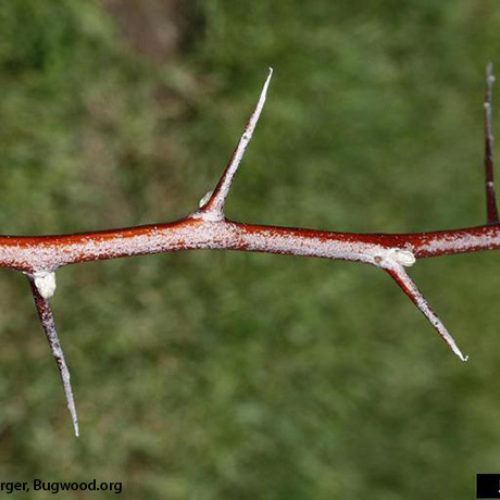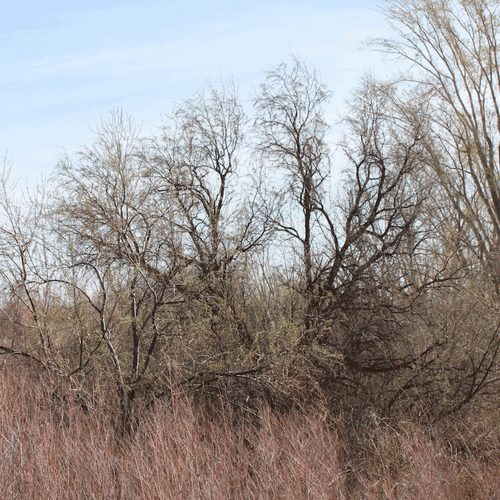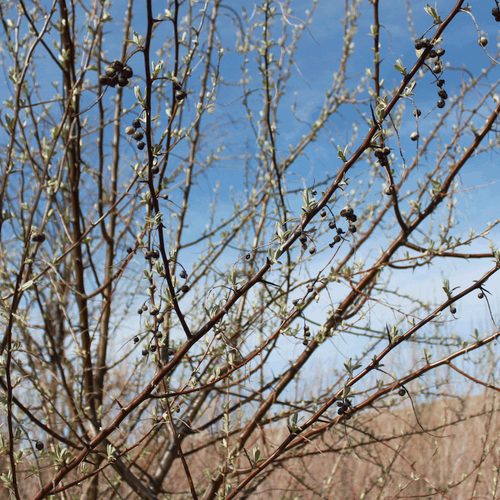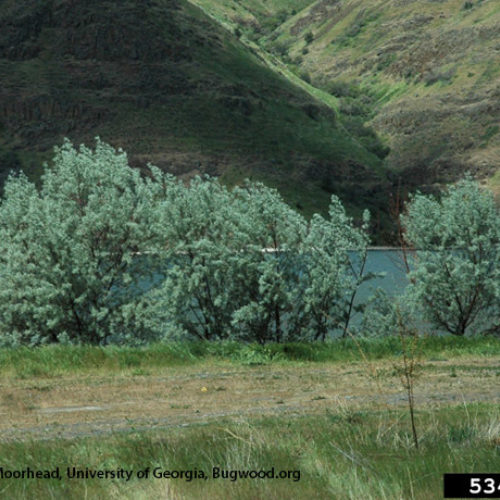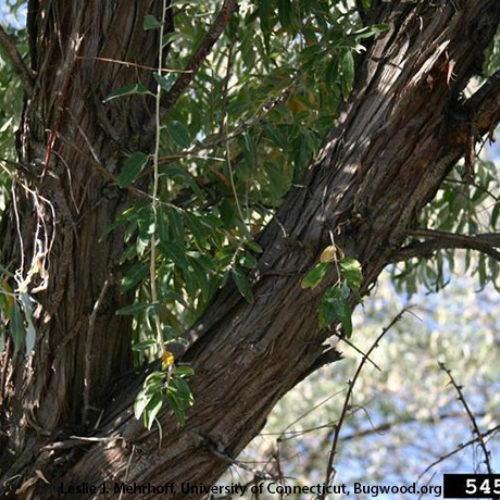Russian Olive
Elaeagnus angustifolia
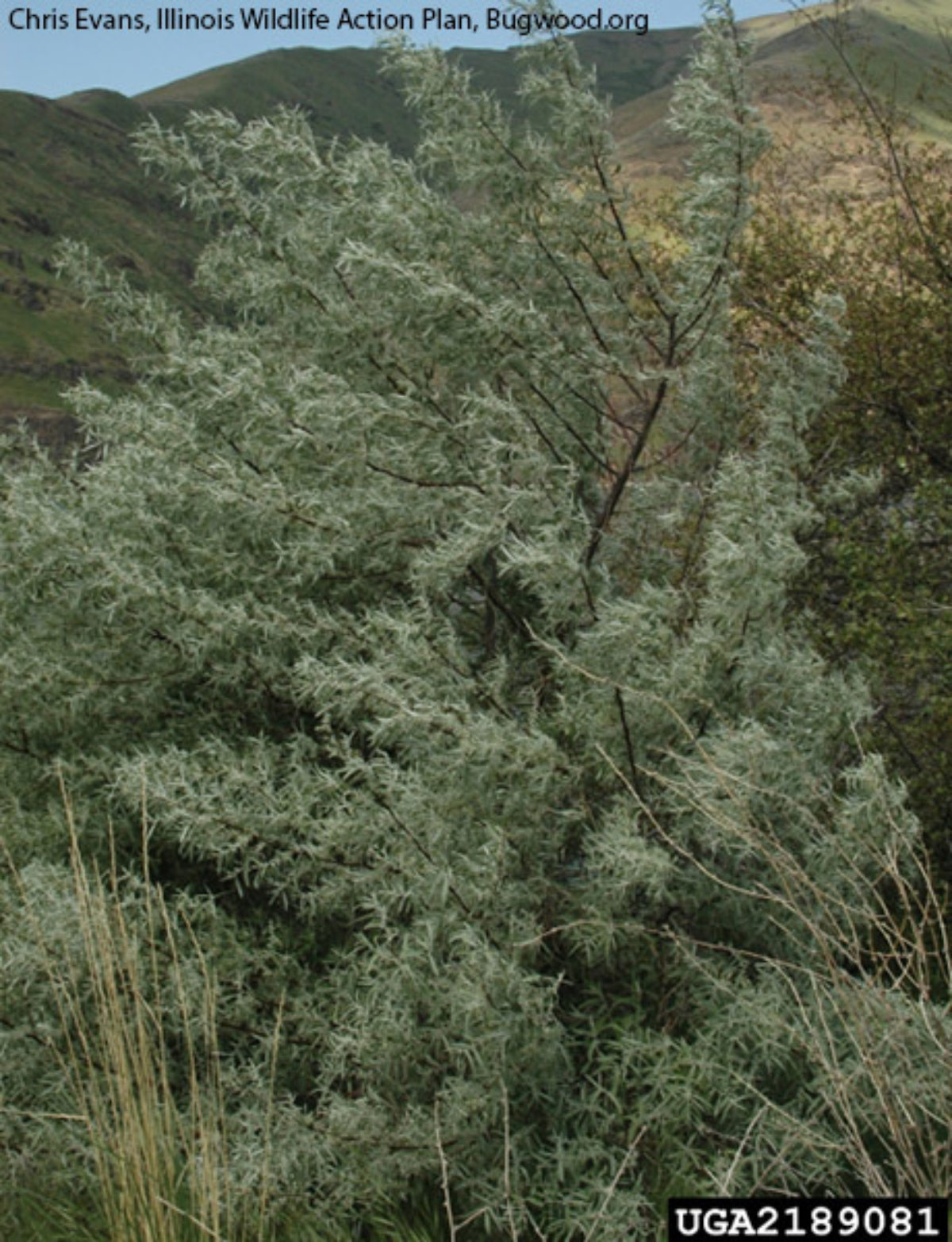
Family: Elaeagnaceae
Other Common Names: oleaster, silverberry, wild olive, narrow-leafed oleaster
Weed class: C
Year Listed: 2014
Native to: parts of Asia and Europe
Is this Weed Toxic?:
not known to be
Why Is It a Noxious Weed?
Russian olive spreads along waterways and has naturalized along many of our major rivers in the interior western U.S. It can crowd out important native riparian plant communities that provide valuable wildlife habitat. Listed as a noxious weed in many other states, Russian olive is growing and spreading in eastern Washington.
How would I identify it?
General Description
Russian olive is a deciduous multi-stem shrub or tree, growing up to around 20 feet. It is a nitrogen-fixing plant with spiny stems, silvery foliage, fragrant yellow flowers and forms olive-like fruit.
Flower Description
Flowers are in clusters of 1 or more flowers in the leaf axils. Flowers are 0.2-0.4 inches (5-10 mm) long and wide, yellow to yellowish green and highly fragrant. Flowers lack petals and have 4 petal-like sepals and 4 stamens. Bloom May to June.
Leaf description
Leaves are alternately arranged, narrowly lanceolate to elliptic in shape and 1.6-3.1 inches (4-8 cm) long . Leaves have smooth edges and the upper leaf surface is gray-green and moderately covered with silvery star-shaped hairs and scales. The petioles and underside of leaf is silvery gray and densely covered with silvery peltate scales.
Stem description
Stems are smooth to somewhat smooth, dark reddish brown and may have painful thorns . Young stems are slivery gray and densely covered with silvery, shield-shaped (peltate) scales. Bark on trunks is reddish in color and sometimes shredding.
Fruit Seed Description
Fruits are single-seeded, oval-shaped, drupe-like, 0.4-0.6 inches (1-1.5 cm) long. They are covered with silver scales, gray in color and drying to brown.
Where does it grow?
Russian olive is spreading in eastern Washington, notably along lakes, irrigation waterways and right-of-ways. Please click here to see a county level distribution map of Russian olive in Washington.
How Does it Reproduce?
Plants primarily reproduce from seed. Seed dispersal occurs during the fall and winter, primarily by birds, other vertebrates and possibly water and ice. Cut trees can readily resprout from the crown and roots.
How Do I Control It?
General Control Strategy
When controlling Russian olive, it is important to consider site-specific conditions. It is important to replant the area with desirable plants, such as native willow and cottonwood species, to restore riparian wildlife habitat. Remember to wear protective clothing when controlling Russian olive to avoid injury.
Mechanical Control
When possible, manually remove seedlings and saplings, including roots, before plants mature. Pulling or digging out larger plants is possible but is both labor intensive and can cause high site disturbance, also roots may be left behind that can respout. Larger plants may be able to be removed with a bulldozer or tractor. Girdling or cutting alone can supress growth but will not kill plants.
Biological Control
There are currently no biological control agents available for Russian olive.
Herbicide Control
Cut stump treatments can provide effective control of Russian olive as well as foliar sprays. A number of options are listed in the PNW Weed Management Handbook. Please refer to the PNW Weed Management Handbook for the most current recommondations, or contact your county noxious weed coordinator.
For More Information
See our Written Findings for more information about Russian olive (Elaeagnus angustifolia).
Control information from the book: Weed Control in Natural Areas in the Western United States.



